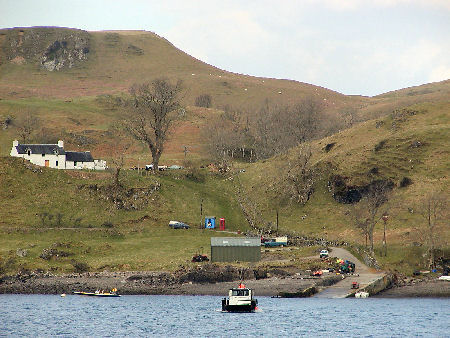 Kerrera, Where Alexander II Died |
Alexander II lived from 24 August 1198 to 6 July 1249 and was King of Scotland from 4 December 1214 to 6 July 1249. He was the only son of William I of Scotland and Ermengarde of Beaumont and was born in Haddington, East Lothian. On 4 March 1212, aged just 13, he was knighted by King John of England. He succeeded to the Crown of Scotland at the age of 16, at the end of 1214. The wider picture in Scotland at the time is set out in our Historical Timeline.
Despite his youth at the time of his accession to the throne, Alexander II made a strong early impression. In 1215 he quelled a revolt by the MacWilliam and MacHeth clans in Moray and Angus. The MacWilliams were wiped out in reprisal, with the daughter of the head of the family being battered to death against the mercat cross in Forfar.
And in 1216 Alexander managed to bring Argyll under effective control of the Scottish crown for the first time. In 1235 he suppressed a rebellion in Galloway.
Alexander made an equally vigorous start to his reign in his dealings with England. In 1215 he threw the weight of Scotland behind the English barons in their struggle against John I of England, and led an army into England to support them. After John was succeeded by his son Henry III of England, a peace treaty was concluded between the countries.
On 21 June 1221 Alexander married Joan of England, Henry III's sister, at York Minster. He was aged 23, she was 11. They had no children prior to Joan's death in England on 4 March 1238. On 15 May 1239, Alexander married again, this time to Marie, daughter of Enguerand, Baron de Coucy in Picardy. They had one son in 1241, the future Alexander III.
In 1237 Alexander II and Henry III concluded the Treaty of York. This defined the boundary of the two kingdoms as running between the Solway Firth in the west and the mouth of the River Tweed in the east. With the exception of an area around Berwick upon Tweed, which was to remain the subject of dispute for another two centuries, it fixed for the first time the border we see today. Under the Treaty of York, Alexander II rescinded long standing Scottish claims to the counties of Northumbria and Cumbria.
In the late 1240s, Alexander II started to make moves to regain control of the Hebrides from Norway. When efforts at negotiation and purchase didn't work, he mounted a military campaign to take the isles by force in 1249. However, Alexander fell ill and died on the Isle of Kerrera near Oban. He was buried at Melrose Abbey and succeeded by his son Alexander III.
